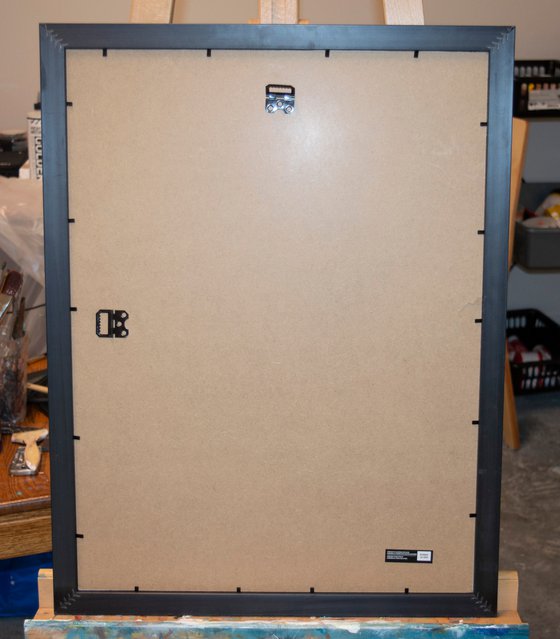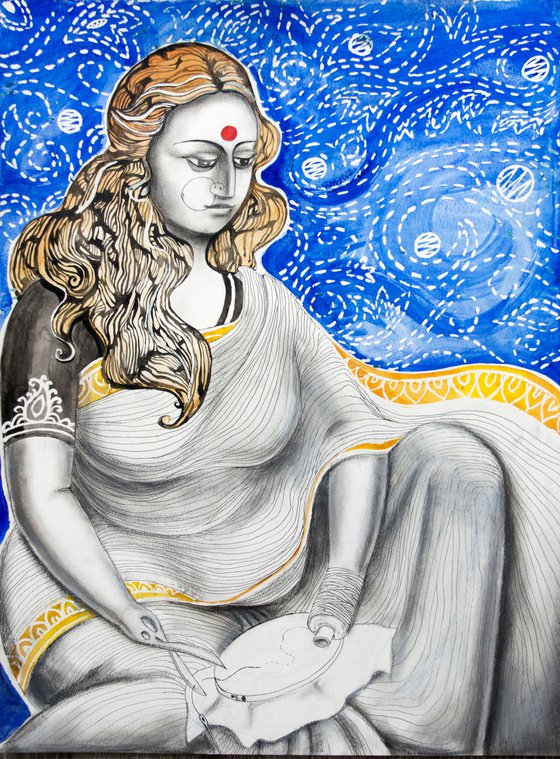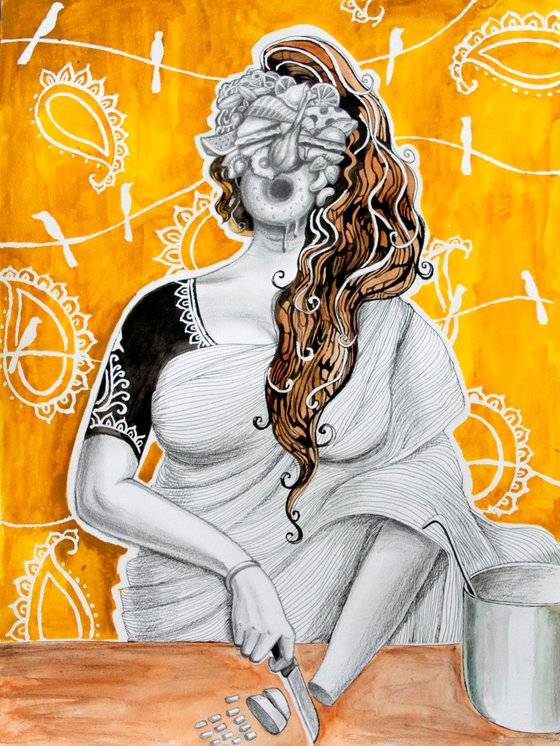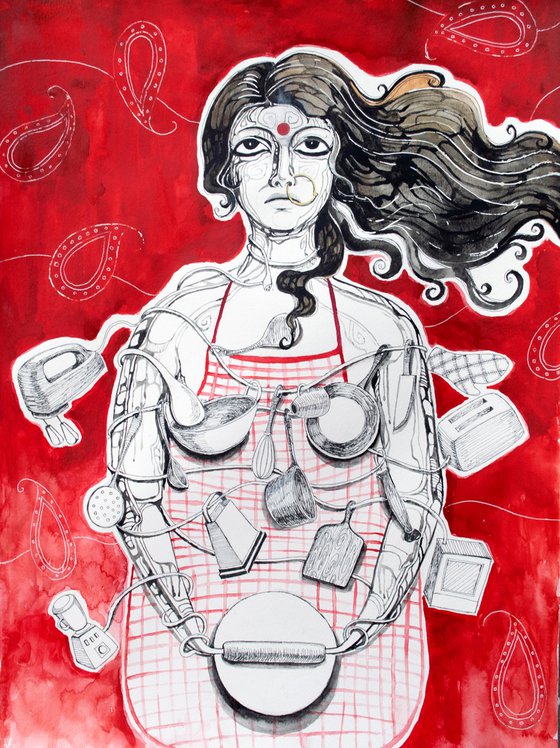- By medium
- By subject
- By budget
- Sales
- Gift cards
- Discover all art
- Artists
- Editors’ picks
- Ideas
Original artwork description:
The series of drawings Strings Attached developed as a reaction to my personal experiences growing up in India where the stereotypes associated with the ideal woman are still very strong. Continually reinforced is the idea that the primary role of a woman, more often than not a married woman, is one centered around giving – giving a child, giving food, giving comfort, and giving pleasure. Born in a developing country amidst economical, social, and political instability, I was introduced to a lot of local myths and beliefs about the stereotypical role of women in my community at an early age.
I was often told things like “your academic qualifications do not matter since all you eventually will do is make roti (Indian bread) in future”, or “learn household chores from your mother, otherwise no one will marry you” or “Woman's virtue makes a home happy”. I would burden myself thinking that I was less of a woman since I had different interests. I was interested in cricket rather than the toy kitchen set I got from my aunt on my 4th birthday. In my youth, I tried to fit these expectations; tried to be good at domestic chores just to fit into my milieu and to be appreciated by my elders. It took a long time for me to accept myself the way I am and to feel confident exploring the gendered stereotypes that are so present in my culture from a critical perspective.
The myths and beliefs, that featured so strongly in my adolescence and tied my value to feminine domestic tasks are the driving force in this project. In this series, I explore my personal experience with activities such as cooking and sewing and their influence on me. I use the form of the silkworm and moth to symbolize the metamorphosis of the woman subject, perhaps alluding to the evolution of womankind. Using both a subtle and sometimes humorous tone I explore this evolution that many girls and women go through, becoming the tools and the very substance of their expected stereotypes.
The vibrant background is inspired by the colorfulness and diversity in my culture. There are many patterns that are very common in Indian textiles.
Materials used:
watercolor, pen
Tags:
#feminism #against discrimination #sexismStrings Attached (2021) Drawing
by June
8 Artist Reviews
£800
- Drawing on Canvas
- One of a kind artwork
- Size: 203.2 x 66.04 x 1.27cm (framed) / 182.88 x 60.96cm (actual image size)
- Framed and ready to hang
- Signed on the front
- Style: Surrealistic
- Subject: People and portraits
Loading
Original artwork description
The series of drawings Strings Attached developed as a reaction to my personal experiences growing up in India where the stereotypes associated with the ideal woman are still very strong. Continually reinforced is the idea that the primary role of a woman, more often than not a married woman, is one centered around giving – giving a child, giving food, giving comfort, and giving pleasure. Born in a developing country amidst economical, social, and political instability, I was introduced to a lot of local myths and beliefs about the stereotypical role of women in my community at an early age.
I was often told things like “your academic qualifications do not matter since all you eventually will do is make roti (Indian bread) in future”, or “learn household chores from your mother, otherwise no one will marry you” or “Woman's virtue makes a home happy”. I would burden myself thinking that I was less of a woman since I had different interests. I was interested in cricket rather than the toy kitchen set I got from my aunt on my 4th birthday. In my youth, I tried to fit these expectations; tried to be good at domestic chores just to fit into my milieu and to be appreciated by my elders. It took a long time for me to accept myself the way I am and to feel confident exploring the gendered stereotypes that are so present in my culture from a critical perspective.
The myths and beliefs, that featured so strongly in my adolescence and tied my value to feminine domestic tasks are the driving force in this project. In this series, I explore my personal experience with activities such as cooking and sewing and their influence on me. I use the form of the silkworm and moth to symbolize the metamorphosis of the woman subject, perhaps alluding to the evolution of womankind. Using both a subtle and sometimes humorous tone I explore this evolution that many girls and women go through, becoming the tools and the very substance of their expected stereotypes.
The vibrant background is inspired by the colorfulness and diversity in my culture. There are many patterns that are very common in Indian textiles.
Materials used:
watercolor, pen
Tags:
#feminism #against discrimination #sexism14 day money back guaranteeLearn more







